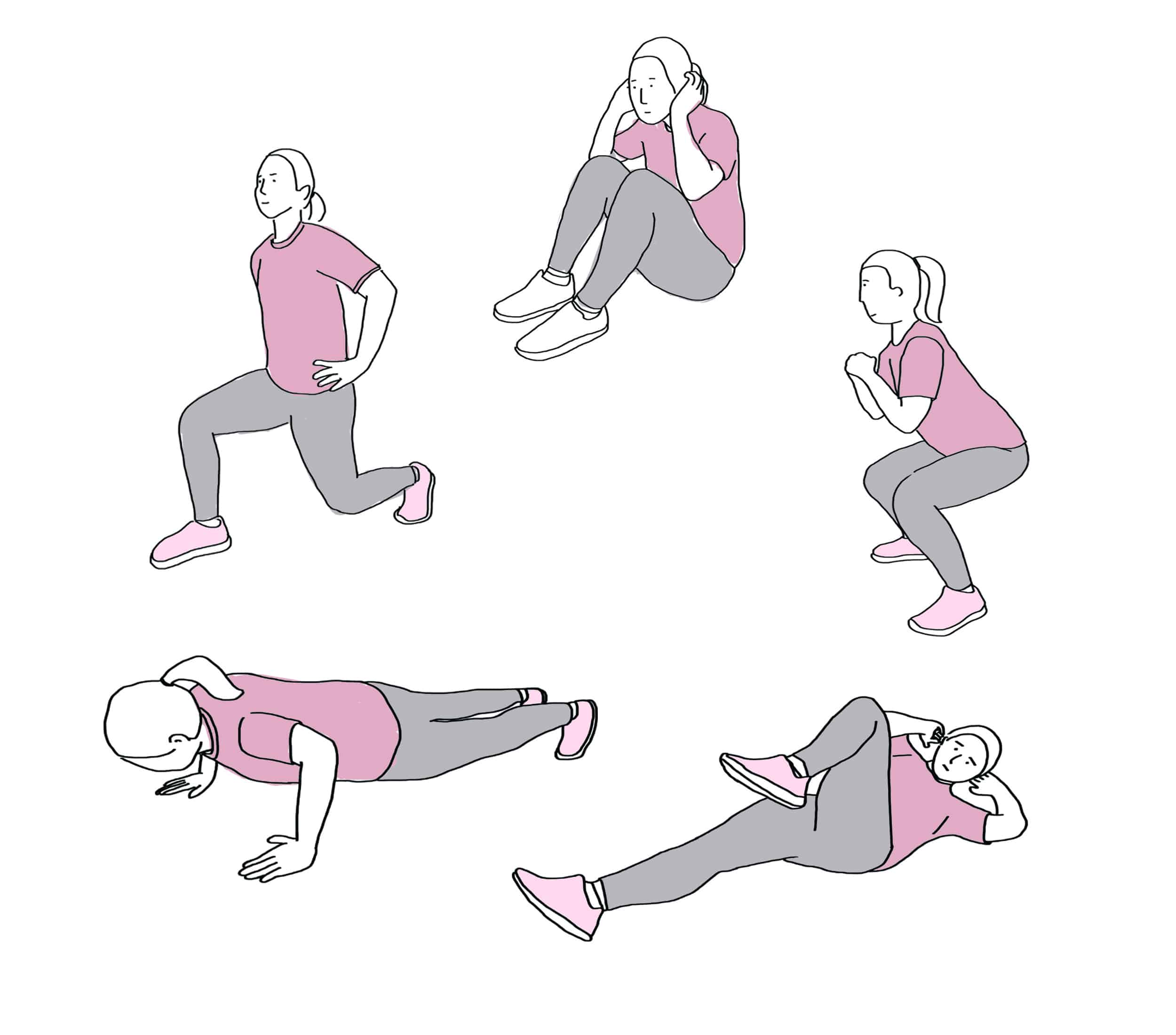Circuit training has always been a hot topic within the fitness world, and it may just be worth sweating over. Circuit training is a rotation of repeated movements that maximizes cardio and strengthens muscle through sets and reps. The objective of circuit training is to train endurance as well as to strengthen and target muscles in order to improve an individual’s flexibility and coordination. Each training session typically includes a combination of both aerobic exercise and strength training.
The debate surrounding circuit training
Arguments against circuit training claim that it can limit the ability to increase strength and power, but it can also be interpreted as a workout that challenges the whole body. What you get out of your training depends on how you choose to structure it.
Circuits are designed to fit at least eight repetitions per exercise and per station. Because circuit training consists of various exercises and stations, each targeting different muscle groups, it may decrease the gains you would earn from a more specific muscle training workout.
Despite that, it is possible to do low-repetition, high-weight exercises during a circuit to include the strengthening component. The purpose of a circuit is repetition to increase endurance. Hardcore weightlifting exercises within a circuit can be too exhausting to complete in multiple rounds, especially when performed with little rest or recovery time.
How to effectively circuit train
While circuits can be tiring, an individual’s pace is important. People should be wary of the tendency to work harder and push themselves in the beginning, only to give in by the end.
This is a common mistake partly because participants may minimize or eliminate rest between stations. Participants are most effective when they use a work-rest ratio of at least 1:1. One good example is 30 seconds of work and 30 seconds of rest.
To help avoid fast muscle fatigue, you can structure circuits for strength training by alternating between low-rep strength and high-rep endurance exercises. You can also vary the muscles each station intends on targeting, which may allow you to have a more balanced full-body workout.
Research shows that this type of training is more effective than a regular workout. You can burn up to 10 calories per minute, and the afterburn effect will have you burning off calories for up to 48 hours after your workout ends. For those who lift weights, circuit training burns 30 per cent more calories than your typical weight workout and offers more cardio benefits.
The stations associated with circuit training also provide a way to organize an individual workout plan within a tighter period of time. Another point in favour of circuit training: you can do it at the gym or at home. By participating in a circuit, you’re guaranteed to hit every major and minor muscle group.
How to create your own circuit
First, create your own circuit by deciding how long you want your workout to be. Challenge yourself by taking part in this type of training two to three times a week by completing a full circuit of four to eight exercises.
Next, create your stations. You can start with upper body then work your way to muscles in the lower body. My personal favourites for upper body exercise are ab twists, pushups, or bicep and tricep curls with handheld weights. When selecting a lower body workout, you can include lunges, calf raises, or sumo squats.
The next exercise should be compound, combining upper and lower body. Some exercises can include jumping lunges, mountain climbers, and burpees. Keep each exercise on a 30-second rotation between performance and rest. Remember the 1:1 ratio of performance and rest.
Conclude the circuit with a one-minute cardio set. Your exercise choices can be jump rope, high knees, or stair climbing. Once completed, allow yourself one minute of rest as you gear up to work through another repetition of the circuit.
Like with any workout, you get out what you put in. In the end, it is up to you to give your best 30 seconds or let the 30 seconds get the best of you.


